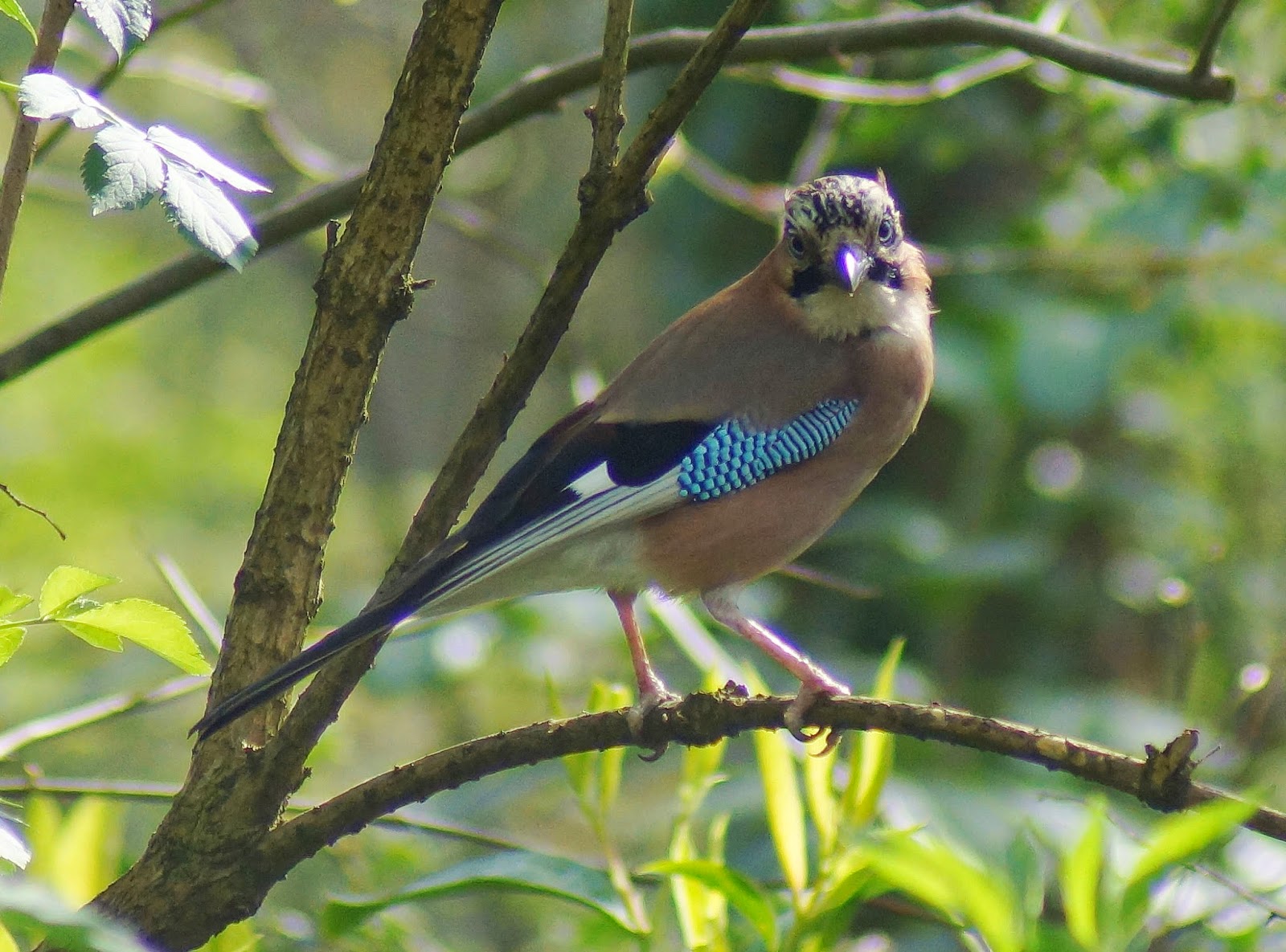I own up. I am becoming completely obsessed by the Cranford Park Kestrels. Following on from yesterdays blog, my hunch that they have a second nest tree looks like it is true. More about them shortly. Tony and Sue met me on site this morning, and for a while we all split up to check on the various nest sites. Neither Sue nor I saw the Wren near its nest today, but Tony did, so fingers crossed it looks like its an active site still. New nest sites found today include a Robin and a Blackbird. I also bumped into John and Scally, and briefly showed them around some of the sites.
Both the male and female Green Woodpecker were checking out their nest tree this morning. The male even made his way right to the top and happily sat there for a while. Tony visited the site after I'd left and got some lovely shots of the male excavating the nest hole again, so it is definitely looking like we will have nesting Green Woodpeckers very soon.
So back to the Kestrels. After weeks of observing them around a certain tree which I was convinced was their nest tree, I am now sure they are nesting deeper within the woods. Yesterday I had narrowed it down to three potential trees, today we think we have narrowed it down to one. And its the only tree that is evergreen, hence the nest cannot be seen at all. Good news for the Kestrels.
We observed the male and the female around and in the tree today. Females lay between 4 and 6 eggs during April, and if it's been a bad winter and spring, sometimes egg laying is put off until May. With our mild winter, and mild March, I still think egg laying is imminent for the Cranford Park pair. Once we stop seeing the female, we will know the eggs have been laid as only she will incubate the eggs. During this time the male will bring her food.
Incubation takes between 26-34 days. The chicks are then brooded by the female only for the first two weeks, and they will fledge between 27-32 days after hatching. The young will stay with the parents for another four weeks after fledging, learning how to hunt and fly. So by those facts I guesstimate we can start seeing young Kestrels around Cranford Park around late June or early July. Hard to put a date on it until I know Mrs Kes has started incubating.
I witnessed a food pass today, and caught sight of the end of another mating, both times with the birds calling to each other first. Sue and I also had the female land in a tree near the Wren nest site, and we heard her calling again. All three of us watched both birds going in and out of the new nest tree, sometimes calling, sometimes just landing silently and remaining hidden for a while. The male is quite recognisable as he has some damage to his tail.
 |
| Mr Kes. Not a great photo but you can see his damaged tail. |
 |
| Mr Kes again. There appears to be some feathers missing on the left hand side of his tail. |
 |
| Mrs Kes. Slightly bigger than Mr Kes, and with a brown head. |
Elsewhere around the park, I found a pair of Jays near the outdoor classroom (the circle of logs).
Sue, Tony and I spent some time trying to photograph a singing Goldcrest. I've had to lighten my only decent photo quite a lot, but it was nice to have some clear views of this tiny little bird.
Last week we saw a Stock Dove checking out a hollow. Today we saw a male and female Stock Dove sitting on the branch just below the hollow, so it's looking good for another nest site to keep an eye on.
Lastly, we heard reports of a Merlin spotted flying around the edges of the woodland again, although not seen by us. This could be really exciting news after Sue and I saw one last week in the same area.
John and Scally also saw a female Reed Bunting in the Headland area. I don't think I've ever seen one at Cranford Park before. It may just be passing through, but I'll check out the area the next time I visit.






.JPG)
Sounds really promising for all the potentially breeding birds, Wendy. Great to get a shot of the Goldcrest... & hope the Merlin stays around..
ReplyDelete